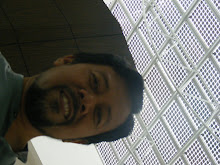SEMESTER 1 SIDANG 2013/2014
KHAMIS 09.00 - 11.50
COURSE OUTLINE
Lecturer : Mohd Zin Kandar, (PhD) Associate Professor.
Room No. : 431 Level 4, Block B11
Tel. Nos. : 07-5537389 / 019-7342539 / 013-4352539
Email : drzin2000@yahoo.com ; mzin@utm.my
Synopsis. : The course gives emphasis on human comfort and energy saving concept and criteria in architecture and building design. The scope of the architecture solutions may be passive or mechanical that illustrates climatic understanding and the use of appropriate technological solutions in architecture design with particular emphasis on tropical climate.
No.
|
Course Learning Outcomes
|
Programme Outcome
|
Taxonomies and Soft-Skills
|
Assessment Methods
|
CLO1
|
Outline design criterion to solve environmental issues in relation to achieve comfort and energy conservation in built environment
|
PO1
|
C4
|
F, T
|
CLO2
|
Conduct building survey and collect data on energy audit and management
|
PO2
|
P4
|
Assignment
|
CLO3
|
Advance to solve mechanism of energy efficient integrated systems into design project/existing
|
PO3
|
P5
CTPS 1,2,3
|
Pr
|
CLO4
|
Adopt self reliance in working independently in acquiring knowledge on building technology system
|
PO6
|
A3
LL1,2
|
Assignment
|
(T – Test ; PR – Project ; Q – Quiz; HW – Homework ; Pr – Presentation; F – Final Exam)
Assessment Criterion:
Assignment Description
|
Marks %
|
Assessment Criteria
|
Overall %
|
||||||
PO1
|
PO2
|
PO3
|
PO4
|
PO5
|
|||||
1
|
Energy Management and maintenance in Building – Building Study (group work)
|
CL02
|
20%
|
1. To test student’s understanding on building design characteristic in relation to human comfort criteria.
2. To test student’s ability to conduct data collection related to building design characteristic and information, energy consumption and technologies available in building case studies.
3. To evaluate student’s ability in data analysis, syntisize and discuss energy performance of the building. on building maintenance issues.
|
25
|
||||
CLO4
|
5%
|
||||||||
2
|
Project: to solve mechanism of energy efficient integrated systems into design project/existing
|
CLO3
|
25%
|
1. To evaluate student’s ability in project design which integrate climatic factors, Low Carbon Elements, EE elements and RE technologies in his / her building design project.
|
25
|
||||
4
|
Test
|
CL01
|
15%
|
To test student’s ability on several knowledge an issues relate to Climatic, EE&RE technologies and Environmental Issues
|
15
|
||||
5
|
Final Exam
|
CLO1
|
35%
|
To test student’s ability on several knowledge an issues relate to Climatic, EE&RE technologies and Environmental Issues
|
35
|
||||
Total
|
100
|
||||||||
WEEKLY SCHEDULE
- : Introduction to the Environmental Architecture, Building Climatology and Climatic Architecture Technology
- : Energy for development
- : Energy Consumption and environmental issues.
- : Green Building – Background, Concept & initiatives
Energy Conservation : Renewable Energy and Energy Efficiency concept and
initiatives. Briefing on Assignment 1 & 2 - : Understanding Thermal Comfort Criteria and Design Response
Design response to climate condition. - : Principles of Sustainable Architectural Design and Practice
- : Test 1. Presentation of Assignment 1
- : Mid Semester Break
- : Passive and Active Cooling Technology. Solar Control and Daylighting
- Technology. Presentation of Assignment 1
- : Renewable Energy Technology for building.- PV System, BIPV, Solar Heating etc Presentation of Assignment 1
- : Energy Efficiency Technologies - EE lighting, EE cooling, EE office equipment.
- : Integrated Energy Building Design, Energy Management System & Intelligent building.
- : Energy Audit in building, EE Building & Building Maintenance.
- : Presentation of Assignment 2 (PR)
- : Presentation of Assignment 2 (PR)
- : Revision week
- : Final Examination
REFERENCES :
- Victor Olgay,(1963).Design With Climate (Bioclimatic Approach to Architectural Regionalism), Princeton University Press, Princeton, New Jersey.
- Randall Thomas. (1996)Environmental Design: An Introduction for Architects and Engineers, E&FN Spon, Chapman&Hall, London,.
- Fuller Moore(1993), Environmental Control Systems: Heating Cooling Lighting, McGraw-Hill International Editions, Architecture and Urban Planning Series.
- Randal Banham (1969).The Architecture of Well-Tempered Environment, The Architectural Press, London.
- Dean Hawkes.(1996), The Environmental tradition, E&FN Spon, Chapman&Hall, London,.
- Catherine Slessor, Eco-Tech(2001): Sustainable Architecture and high Technology,
Thames&Hudson Ltd.,London. - Ivor Richards (2001). “TR Hamzah & Yeang Ecology of the sky” Image Publishing.
- Alison G et.al. (2007).The Green Studio Handbook – Environmental Strategies for Schematic
Design, Architectural Press. - Jason Alread & Thomas Leslie (2007). “Design-Tech: Building science for Architect”.
Architectural Press.
UTM Eco-Home, Datong China, Aug. 2013.
Natural Lighting at UTM Eco-Home, UTM Skudai, Jun 2013.
Installing Aluminium foil & Insulation for UTM Eco-Home roof.













No comments:
Post a Comment